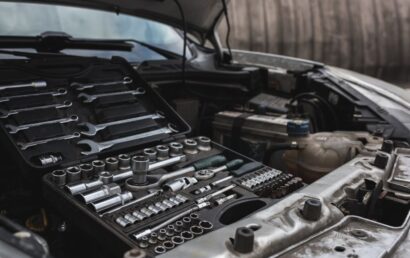4 Marine Coating Problems And How To Overcome Them
The maritime environment presents a unique set of challenges for coatings. While thermal spray coatings have made significant strides in combating marine coating problems, it’s essential to be aware of the potential pitfalls and their solutions. As marine structures and vessels are continually exposed to harsh conditions like saltwater, humidity, and UV radiation, the coatings used need to be resilient. This article dives deep into the predominant challenges in marine coatings and offers insights on overcoming them.
Corrosion Due to Saltwater Exposure
Saltwater is notoriously aggressive and can significantly expedite the corrosion process of metals. When marine coatings fail to provide adequate protection, the underlying metal starts to corrode, leading to structural vulnerabilities.
Overcoming this challenge requires a two pronged approach. Firstly, surface preparation is crucial. Ensuring the metal surface is clean and free from any contaminants before applying the coating can enhance adhesion. Secondly, using high performance coatings designed explicitly for marine environments can offer superior protection. Thermal spray coating services often employ specialized coating materials with enhanced resistance to saltwater corrosion, ensuring longer lasting protection.
UV Degradation and Oxidation
Constant exposure to sunlight and UV radiation can degrade marine coatings over time. This UV degradation can lead to a loss of gloss, color fading, and reduced protective capabilities. Oxidation is another challenge, where the coating reacts with oxygen, leading to discoloration and a weakened structure.
Addressing UV degradation requires the use of UVresistant coatings, often formulated with UV absorbers or stabilizers that can deflect or absorb the harmful rays. For oxidation, using coatings with antioxidant properties can help. Moreover, regular inspections and timely recoating can also extend the lifespan of marine coatings and ensure they remain effective against UV rays and oxidation.
Bacterial and Marine Growth
Marine structures are often plagued by the growth of barnacles, algae, and other marine organisms. These can attach to the hulls of ships or underwater installations, affecting their performance and integrity.
To combat this, antifouling coatings are employed. These coatings are designed to prevent or reduce the attachment of marine organisms. They work by creating a surface that is unfavorable for attachment or by slowly releasing biocides that deter marine growth. Its essential to choose a coating that aligns with the specific challenges of the marine environment in which the vessel or structure operates. Regular cleaning and maintenance can also ensure that any marine growth is promptly addressed.
Coating Delamination and Blistering
Delamination refers to the detachment of the coating from the substrate, often appearing as large patches of missing coating. Blistering, on the other hand, presents as raised bumps on the coated surface, caused by moisture or air trapped underneath. Both these problems can compromise the protective attributes of the coating and expose the underlying material to the marine environment.
A combination of meticulous surface preparation and the correct application technique can help prevent these issues. Ensuring that the surface is free from contaminants and moisture, using the right primer, and allowing adequate curing time can all contribute to preventing delamination and blistering.
Marine coating problems can compromise the integrity and performance of vessels and marine structures. However, with the right knowledge, materials, and practices, these challenges can be effectively addressed.



